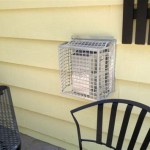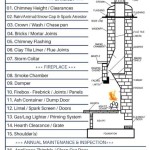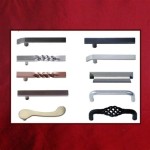New Construction Gas Fireplace Installation: A Comprehensive Guide
Gas fireplaces are a popular amenity in new construction homes, offering warmth, ambiance, and aesthetic appeal. Integrating a gas fireplace into a new build requires careful planning and adherence to safety regulations. This article provides a comprehensive guide to navigating the process of new construction gas fireplace installation, outlining essential considerations, installation steps, and safety protocols.
The first step in installing a gas fireplace during new construction is selecting the appropriate unit. Numerous models are available, varying in size, style, heating capacity, and venting requirements. Choosing the right fireplace necessitates considering the home's overall design, the room's dimensions, and the desired heat output. Venting options are also critical; direct-vent models are often preferred in new construction as they vent directly to the outside, eliminating the need for a chimney. Vent-free models, while seemingly simpler, are subject to stricter regulations and may not be permitted in all jurisdictions.
Engaging with qualified professionals early in the design phase is crucial. A licensed gas fitter, HVAC technician, and construction contractor should be consulted to ensure the fireplace installation complies with local building codes and manufacturer specifications. This collaborative approach minimizes potential issues and ensures a seamless integration of the fireplace into the home's infrastructure.
Planning and Preparation for Gas Fireplace Installation
Effective planning is the foundation of a successful gas fireplace installation. This involves several key steps, including obtaining necessary permits, selecting the fireplace unit, determining the venting route, and preparing the space for installation.
Local building codes dictate the requirements for gas appliance installations. Obtaining the necessary permits is essential to ensure compliance with these regulations and avoid potential fines or delays. The permitting process typically involves submitting detailed plans of the fireplace installation to the local building department for review and approval.
Selecting the appropriate fireplace unit is a critical decision. Factors to consider include the desired heat output (measured in BTUs), the size and style of the fireplace, the venting requirements, and the overall aesthetic appeal. Direct-vent fireplaces are generally preferred in new construction due to their safety and efficiency. They draw combustion air from outside and vent exhaust gases directly outside, eliminating the need for a traditional chimney. Vent-free fireplaces, while easier to install, are subject to stricter regulations due to concerns about indoor air quality.
Determining the venting route is another crucial aspect of planning. The venting system must be properly sized and installed to ensure safe and efficient operation of the fireplace. The venting route should be as short and straight as possible to minimize resistance and ensure proper draft. The vent termination point must also comply with local building codes, typically requiring a minimum distance from windows, doors, and other air intakes.
Preparing the space for installation involves framing the fireplace opening, running gas lines, and installing electrical wiring. The fireplace opening must be framed according to the manufacturer's specifications to ensure proper fit and support. Gas lines must be sized and installed by a licensed gas fitter, complying with all applicable safety codes. Electrical wiring is required to power the fireplace blower, ignition system, and other accessories. A dedicated electrical circuit is typically recommended.
Installation Process: Step-by-Step Guide
The installation of a gas fireplace involves several distinct steps, each requiring meticulous attention to detail and adherence to safety protocols. A licensed and experienced technician should perform the installation to ensure it is done correctly and safely.
The first step in the installation process is to position the fireplace unit within the framed opening. Ensure the unit is level and properly aligned. Secure the fireplace to the framing according to the manufacturer's instructions. This may involve using screws, brackets, or other fasteners.
Next, connect the venting system to the fireplace unit and the vent termination point. Ensure all connections are tight and leak-proof. Use approved venting components and sealants. Proper venting is critical for safe and efficient operation of the fireplace. Improper venting can lead to carbon monoxide poisoning, fire hazards, and other safety risks.
Connect the gas line to the fireplace unit. This should be done by a licensed gas fitter, complying with all applicable safety codes. Perform a leak test to ensure there are no gas leaks. Use a gas leak detector or a soap and water solution to check for leaks around all connections.
Connect the electrical wiring to the fireplace unit. Ensure all connections are secure and properly grounded. Follow the manufacturer's wiring diagram. A dedicated electrical circuit is typically recommended to prevent overloading the electrical system.
Install the fireplace surround and any decorative features. The surround should be installed according to the manufacturer's instructions. Ensure the surround is properly attached to the fireplace unit and the surrounding wall. Decorative features can enhance the aesthetic appeal of the fireplace and blend it seamlessly with the home's decor.
Finally, test the fireplace to ensure it is functioning properly. Turn on the gas supply and ignite the pilot light. Check the flame pattern and adjust the gas pressure as needed. Verify that the blower is operating correctly and that the thermostat is functioning properly. Inspect all connections for leaks and ensure the venting system is functioning properly.
Safety Considerations and Regulations
Safety is paramount when installing and operating a gas fireplace. Adhering to safety regulations and implementing safety measures is essential to prevent accidents and ensure the well-being of occupants.
Carbon monoxide (CO) is a colorless, odorless gas that can be produced by incomplete combustion in gas-burning appliances. Installing a carbon monoxide detector near the fireplace is crucial to detect CO leaks and alert occupants to potential danger. Regularly test the CO detector to ensure it is functioning properly.
Ensure the fireplace is properly vented to prevent the buildup of carbon monoxide and other harmful gases inside the home. Regularly inspect the venting system for any signs of damage or blockage. Clean the venting system periodically to remove any debris that may have accumulated.
Maintain a safe distance between the fireplace and any combustible materials, such as furniture, curtains, and carpeting. Follow the manufacturer's recommended clearances. Keep flammable liquids and materials away from the fireplace.
Have the gas fireplace inspected annually by a qualified technician. This inspection should include checking the venting system, gas lines, electrical wiring, and other components. Address any maintenance issues promptly to prevent potential safety hazards.
Educate all occupants on the proper operation and safety precautions for the gas fireplace. Explain how to operate the fireplace safely, how to recognize potential hazards, and what to do in case of an emergency. This includes knowing how to shut off the gas supply in the event of a gas leak.
Local building codes dictate the requirements for gas appliance installations. Ensure the fireplace installation complies with all applicable codes and regulations. This includes obtaining the necessary permits and having the installation inspected by a qualified inspector.
Regular maintenance is crucial for the safe and efficient operation of a gas fireplace. Clean the fireplace regularly to remove any dust, debris, or soot. Inspect the burner and pilot light regularly and clean or replace them as needed. Have the gas lines and venting system inspected annually by a qualified technician.
By adhering to these safety considerations and regulations, homeowners can enjoy the warmth and ambiance of a gas fireplace while minimizing the risk of accidents and ensuring the safety of their homes and families.
In summary, a new construction gas fireplace installation demands meticulous planning, precise execution, and unwavering adherence to safety regulations. Engaging qualified professionals, securing necessary permits, and prioritizing safety measures are crucial steps in ensuring a successful and safe installation. The benefits of a well-installed gas fireplace, including added warmth, ambiance, and property value, make the effort worthwhile.

Gas Fireplace Installation Chimney Monkey

New Home Construction With Gas Fireplace Installed Stock Photo Adobe

New House Update Plumbing Hvac Electrical And Fireplace Wildfire Interiors

Fireplace Installations Near Dc Chimney Experts

New Construction Pratt S Chimney

Diy Fireplace Installation Framing And Final Connections

Wood Burning Fireplace In New Construction Portland
How To Install Gas Fireplace Insert Heat Glo

How To For A Gas Fireplace Fireplaces Direct Learning Center

All About Prefabricated Fireplaces Chimney Savers
Related Posts








